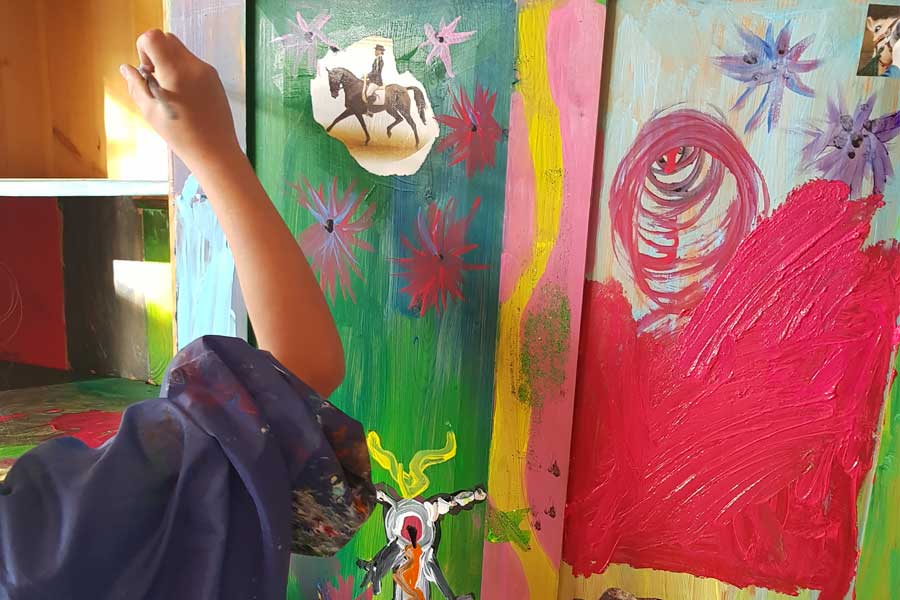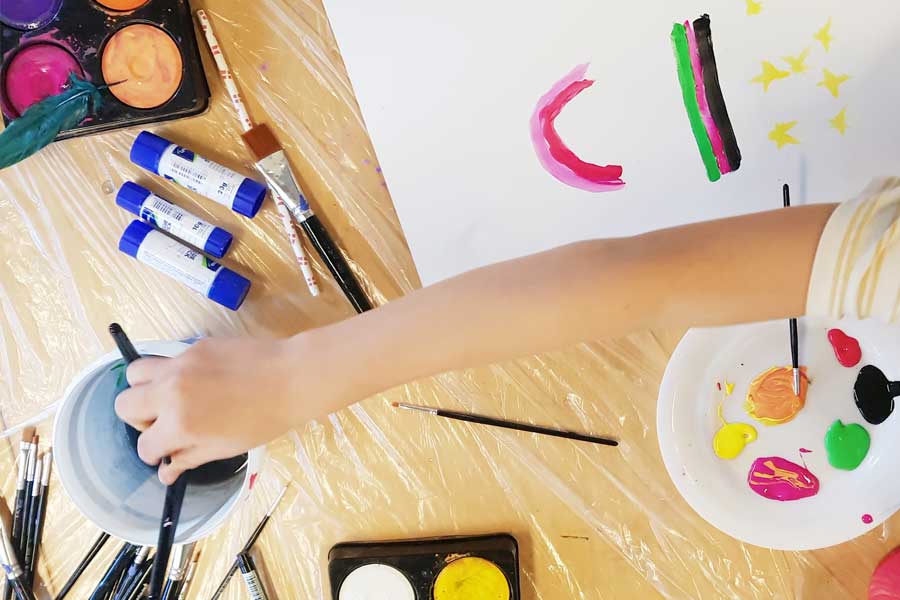Services
Art Therapy
Art therapy is a form of psychotherapy. Art therapists are mental health professionals who use art and other creative processes to facilitate the exploration of feelings, improve self-awareness, enhance social skills, improve cognitive and sensorimotor functions, reduce stress and anxiety and improve emotional resilience. Creative processes include, but are not limited to, drawing, painting, writing, drama, clay, sand, dance and movement. In art therapy,the art materials can allow clients to explore and express feelings and experiences that otherwise might be hard to access or to verbalize. No prior art experience is needed.

Art Therapy and ADHD
For children and young people with ADHD, art therapy can offer an opportunity for self-expression. Artcan be a way to communicate for people who finds it hard to express their thoughts and feelingsverbally. Art therapy can give children with ADHD a way to communicate without restrictions andworries of being judged. This experience can enhance a sense of accomplishment and build self-confidence. Furthermore, the brain gets stimulated when creating art and produces higher levels ofdopamine. This is especially important for ADHD as increased dopamine levels improve concentration.

Art Therapy and Autism
Art Therapy and Trauma
Traumatic events alter the brain and damages some parts of the brain. These parts are connected to emotions, memory and higher functioning thinking. This means that traumatic events can be very difficult and sometimes impossible to put into words. However, art can access these damaged parts of the brain in a non-threatening way. Art therapy can be an excellent alternative to talk therapies as art bypasses the thinking part of the brain and can access the part of the brain where trauma is stored. Furthermore, trauma is also believed to be stored in the body and is often experienced in images, which is why art therapy can be a valuable way to express those experiences.
Art Therapy and Learning Disabilities
Art therapy can be beneficial to those with learning disabilities. The non-judgmental and open-ended aspect of art therapy offers children with learning disabilities an opportunity to flourish, gain a sense of accomplishment, a chance to problem solve and increase confidence and self-esteem. Art therapy does not aim to teach technical skills or expect a certain outcome, but celebrates the diversity of each child’s unique creativity and empower them to discover how extraordinary they are.
Problems encountered in the art-making process often parallels problems encountered in life. Addressing them when they arise in therapy and working through the problems in creative ways can help the child learn in a fun and engaging way.

Art Therapy and Anxiety
Art therapy activities can be meditative, quiet and claiming, which helps sooth symptoms of stress and anxiety.Engaging in art activities can take our mind of stressful thoughts and keep us engaged in the moment. A calm mind is better able to process difficult emotions and experiences. With the help from an art therapist, difficult emotions, which trigger anxiety, can be explored through the symbolic and safe experience of creating art.

Art Therapy and Grief
Art therapy can be beneficial for people of all ages who suffers from grief, however art therapy is particularly useful for grieving children. Children often struggles to have the words to describe or explain their grief, instead their emotions show up in their mood, play and behavior. Even if they look content on the outside, their inside might be experiencing many different feelings that they do not know how to identify or talk about.
When children draw, paint or use other creative means, words are not needed. There is a connection between the head, hear and the hands which can help children express many feelings that has previously been trapped inside. Getting these confusing and difficult emotions out on a piece of paper or in a sculpture can help children actually see and touch the emotion. It can help children experience the loss from a different perspective making things clearer and it gives children a sense of control.
